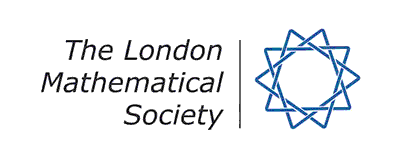Groups and Symmetries:
A conference in celebration of Rob Curtis' 60th birthday
Thursday 20th–Saturday 22nd September 2007
Groups and Symmetries:A conference in celebration of Rob Curtis' 60th birthdayThursday 20th–Saturday 22nd September 2007 |

|
Titles and abstracts
|
| John Bray: Maximal Subgroups of Classical Groups |
|
Arjeh Cohen: Locally affine geometries related to groups of type G2.
I will report on joint work with Hans Cuypers and Ralf Gramlich. Using opposites of a triality on a building of type D4 defined over a field k we constructed a geometry whose rank 2 residues are affine planes over k or generalized digons. This leads to a very symmetric amalgam for the group G2(k). |
| Paul Flavell: A new proof of the Solvable Signalizer Functor Theorem |
| Sasha Ivanov: Automorphisms of the Griess algebra |
|
Wilhelm Plesken: Group Representations from Presentations via Commutative Algebra
For analysing group presentations the construction of matrix representations is a powerful tool. The nilpontent and soluble quotient algorithm can be seen from this point of view. While in these two cases mainly linear methods are applied, the construction of nonsoluble matrix group images leads to algebraic equations. The Janet-algorithm, an 80-years-old almost forgotten Groebner basis technique, which was recently revived, is applied to solve the resulting equations. Various examples are discussed. |
|
Johannes Siemons: On a Conjecture of Foulkes
For the integers a and b let P(a^b) be all partitions of the set {1,..., ab} into parts of size a. Then we may consider the natural module \mathbb{C}P(a^b) as a permutation module for the symmetric group Sym_ab on {1,..., ab}. A conjecture of Foulkes says that \mathbb{C}P(a^b) is isomorphic to a submodule of \mathbb{C}P(b^a) for all a\geq .$ I will talk about some old and new results about the Foulkes conjecture. I hope to give you some impression why this is such a difficult problem which remains open after almost 60 years. |
|
Chiara Tamburini: Carter subgroups in finite groups
In 1961 R. Carter has shown that a finite solvable group contains precisely one conjugacy class of nilpotent self-normalizing (briefly Carter ) subgroups. There are groups, as the alternating group A_5, which do not contain any such subgroup. But a lot of evidence led to conjecture that a finite group contains at most one conjugacy class of Carter subgroups. If the conjecture is false, a counterexample of minimal order should be an almost simple group. So its validity can be verified (or disproved) by direct inspection of all families of almost simple groups. Several authors, and mainly E.P.Vdovin, contributed in this task, to an extent which makes the conjecture very solid. The aim of my talk is to illustrate the methods by which this problem has been studied. They include arguments which simply allow to rule out many classes of groups from the list of possible minimal counterexamples to the conjugacy conjecture. But they also include the actual determination of Carter subgroups, for many classes of groups. As an illustration, I will describe the Carter subgroups of the almost simple groups with socle PSL_n(q). |
|
Richard Weiss: Locally Finite Affine Buildings
Relying heavily on the article he wrote with Bruhat that appeared in Publ. I.H.E.S. 41, 1971, Tits carried out the classification of affine buildings of rank at least four in lecture notes based on talks he gave at a meeting in Como in 1984. At the end of these notes Tits commented that the locally finite affine buildings of rank at least four are precisely the affine buildings coming from absolutely simple algebraic groups of $K$-rank at least four for some local field K (i.e. K is complete with respect to a discrete valuation and has finite residue field). In this talk we will give a brief overview of this result and say something about extensions of this result to the rank three case. |
|
Rob Wilson: 248 and all that
The Lie algebras of types G_2, F_4 and E_8 have dimensions 14, 52 and 248 respectively. The classical explanation of these numbers is as the rank plus the number of roots. Half the roots are positive and half are negative: the number of positive roots is 6, 24 and 120 in the three cases. That is 3!, 4!, and 5!. Why? Perhaps there is another `explanation': divide by 2 and we get 7, 26 and 124. Add 1 and we get 2^3, 3^3 and 5^3. Why? |
|
Francois Zara: Some rank 3 affine complex reflection groups
We look at reflection representations of rank 3 Coxeter groups in dimension 3. We study in particular the case of reducible representations, which gives a way to construct the rank 3 affine complex reflection groups. |
| Organizers: Simon Goodwin, Corneliu Hoffman, Chris Parker and Rebecca Waldecker. |
Supported by the London Mathematical Society 
|